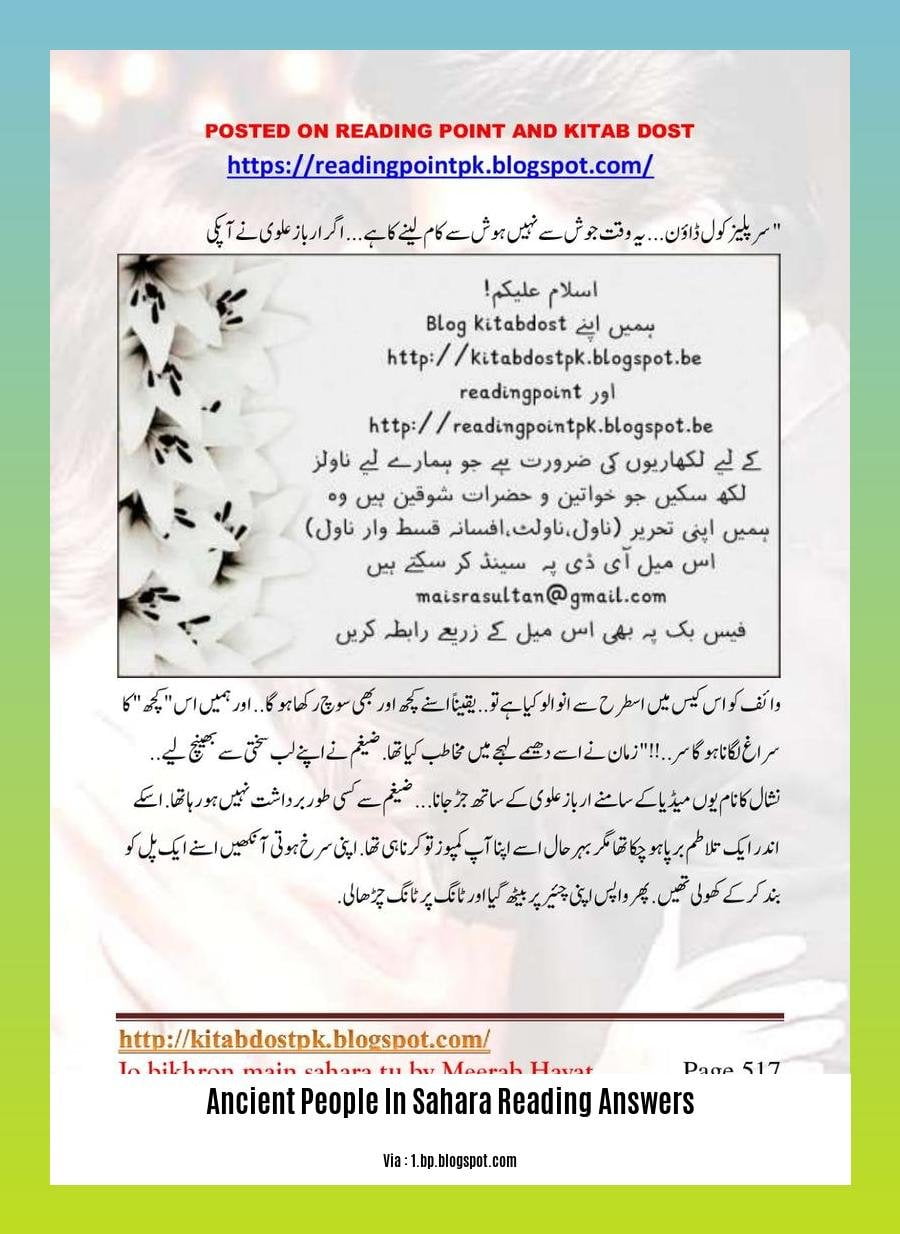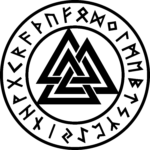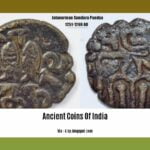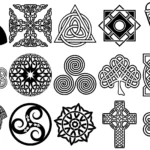Unraveling the Enigmatic Literacy of Ancient Saharans: [- Ancient People in Sahara Reading Answers -] Discover the captivating journey of ancient Saharans and their remarkable literacy. Through deciphering intricate rock art, uncovering enigmatic symbols, and exploring written records, inscriptions, and enduring traditions, we embark on a quest to understand how they communicated, learned, and preserved their cultural heritage. Prepare to be amazed by the vibrant tapestry of knowledge that unfolded within the vast and enigmatic landscapes of the ancient Sahara.
Key Takeaways:
- The Sahara Desert was once a fertile region known as the “Green Sahara”.
- Archaeological evidence shows that ancient people lived in the Sahara during this period.
- In 1998, archaeologists found human remains in the Tenere Desert, supporting the theory of human presence.
- Extensive studies by researchers like Paul Sereno and Rodolfo Garcea have uncovered ancient tools, artifacts, and rock art, providing insights into the culture and technology of these early civilizations.
Ancient People in Sahara Reading Answers: Literacy in the Vast Desert Sands
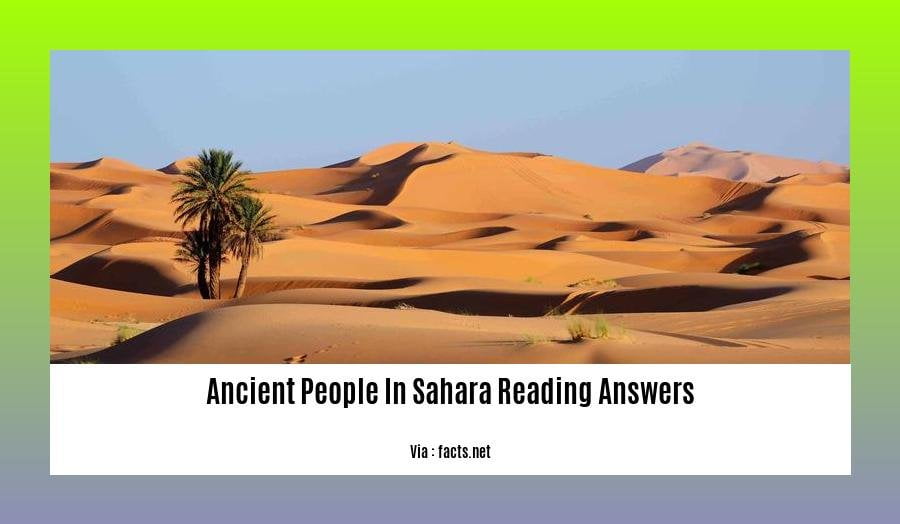
Fascinated by the enigmatic civilizations that once thrived in the vast Sahara Desert? Let’s embark on a journey into the literacy and knowledge-seeking practices of the ancient Saharan people. Together, we’ll explore how they communicated, learned, and preserved their cultural heritage in this extraordinary desert landscape.
The Green Sahara: A Fertile Oasis of Knowledge
Once upon a time, the Sahara wasn’t a barren wasteland but a fertile oasis known as the “Green Sahara.” Archaeological evidence reveals that ancient people inhabited this lush region, creating settlements and developing advanced civilizations.
Unearthing Secrets from Beneath the Sands
In 1998, German archaeologist Stefan Hettwer made a remarkable discovery in the Tenere Desert. He unearthed human remains, providing tangible evidence of human presence in the Sahara during the Green Sahara period.
Exploring Ancient Lifestyles and Traditions
A team of renowned researchers, led by Paul Sereno and Rodolfo Garcea, has dedicated years to studying ancient Saharan people and their lifestyle. Through their extensive work, they’ve uncovered an array of artifacts, including tools, pottery, and intricate rock art, shedding light on the cultural and technological advancements of these early civilizations.
Deciphering the Mysteries of Ancient Scripts
One intriguing aspect of ancient Saharan literacy is the enigmatic scripts they used to communicate. While some scripts have been deciphered, many remain a mystery, waiting to reveal the secrets of their language and written traditions.
Challenges of Acquiring Knowledge in a Harsh Environment
Imagine seeking knowledge in a desert environment where resources are scarce, and conditions are harsh. Ancient Saharans faced numerous challenges in acquiring literacy and preserving their cultural heritage. Yet, they persevered, demonstrating their resilience and determination to learn and pass down their wisdom.
Bridging the Past and Present through Literacy
The literacy practices of ancient Saharan people provide a window into their world, offering insights into their beliefs, values, and daily lives. By studying their scripts and deciphering their symbols, we can bridge the gap between the past and present, understanding the origins of written communication and its enduring significance.
Preserving a Legacy of Knowledge and Wisdom
Despite the challenges, ancient Saharans managed to preserve their legacy of knowledge and wisdom through oral traditions, artwork, and written records. Their literacy practices ensured that their stories, myths, and cultural heritage were passed down from generation to generation, shaping the identity and culture of modern Saharan communities.
Could you please tell us a little bit about the ancient history topic-wise MCQ UPSC? You can find more information about the ancient history topic-wise MCQ UPSC here.
Did you know about the ancient order of hibernians? You can learn more about the ancient order of hibernians here.
Do you have any knowledge of the ancient order of hibernians babylon? You can get more information on the ancient order of hibernians babylon here.
Significance and impact of literacy in ancient Saharan culture
Literacy played a crucial role in the development and flourishing of ancient Saharan cultures. The ability to read and write facilitated communication, preserved knowledge, and fostered cultural identity. Here are some key aspects highlighting the significance and impact of literacy in ancient Saharan culture:
Key Takeaways:
-
Communication and Knowledge Dissemination: Literacy enabled ancient Saharans to communicate effectively across vast distances. They used written records to convey important messages, stories, and information, promoting knowledge dissemination and cultural exchange.
-
Cultural Identity and Heritage Preservation: Written records served as a means to document and preserve cultural traditions, history, and mythology. This contributed to the formation of a strong cultural identity and a sense of continuity among ancient Saharan communities.
-
Trade and Economic Activities: Literacy facilitated trade and economic activities by enabling the recording of transactions, contracts, and agreements. Written records helped maintain accurate accounts, track goods, and establish fair trading practices.
-
Scientific and Technological Advancements: Literacy played a vital role in the advancement of science and technology in ancient Saharan cultures. Written records allowed scholars to document observations, experiments, and discoveries, leading to the development of new knowledge and innovations.
-
Governance and Administration: Literacy facilitated effective governance and administration in ancient Saharan societies. Written laws, decrees, and administrative documents ensured the smooth functioning of government and maintained social order.
-
Religious and Spiritual Practices: Literacy was closely intertwined with religious and spiritual practices in ancient Saharan cultures. Written texts contained religious teachings, rituals, and prayers, helping individuals connect with the divine and navigate the spiritual realm.
-
Education and Knowledge Transfer: Literacy provided a means for educating future generations. Written texts served as учебникs, allowing teachers to impart knowledge and skills to students. This facilitated the transfer of cultural heritage and ensured the continuity of knowledge.
[Citation:
1. https://www.ieltsxpress.com/ancient-people-in-sahara-ielts-reading-answers
2.
Challenges and obstacles in acquiring knowledge and education
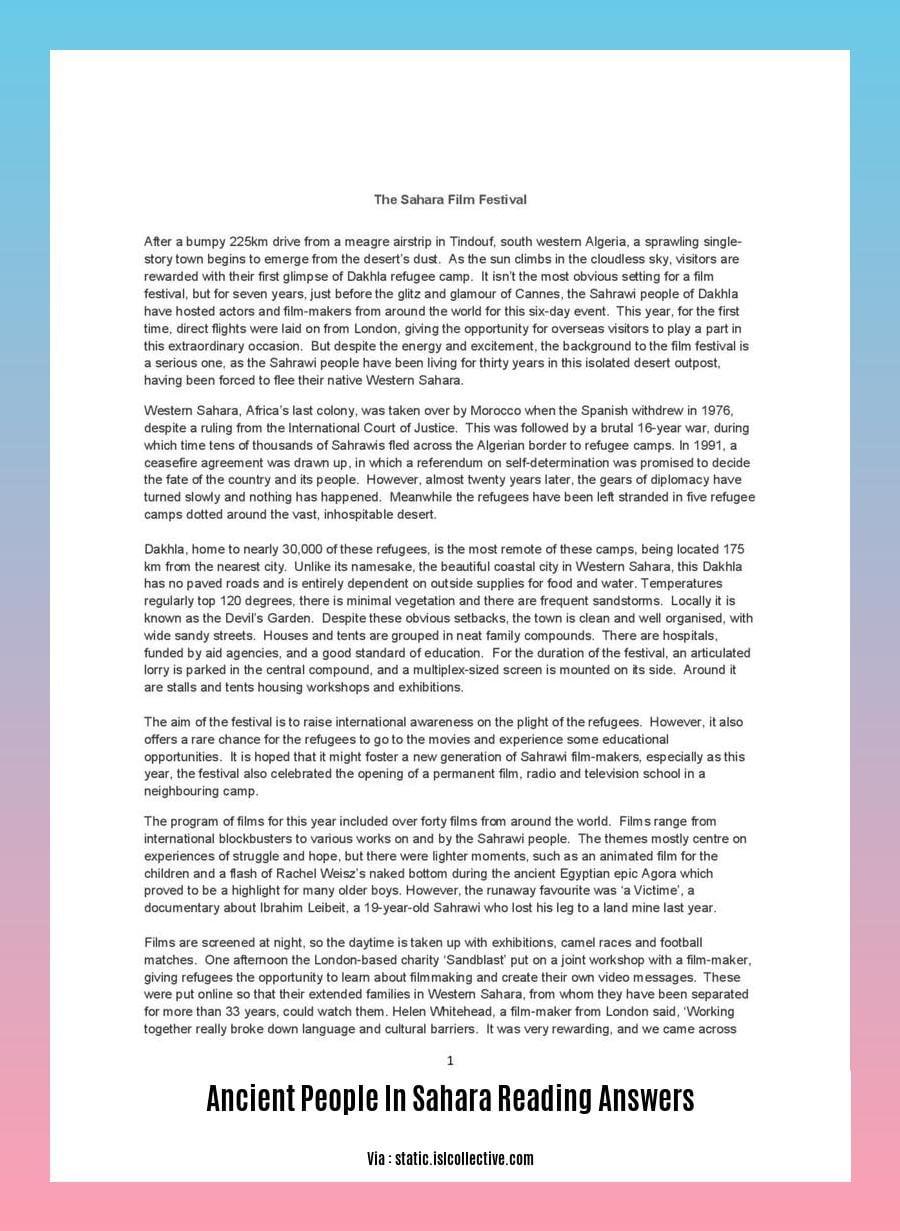
In the ancient Sahara, the pursuit of knowledge and education faced numerous challenges and obstacles. Imagine yourself as a Saharan seeking wisdom in a harsh and unforgiving desert landscape. Here are some of the hurdles you might encounter:
Scarcity of Resources:
-
Educational materials like books and writing implements were scarce due to the limited availability of resources in the desert.
-
Harsh Climate: The extreme heat, sandstorms, and unpredictable weather conditions made it difficult to establish stable centers of learning.
Limited Access to Teachers:
-
The lack of a formal education system meant that teachers were rare and often limited to religious or elite circles.
-
Social Stratification: Education was often restricted to certain social classes, with the lower classes having limited access to learning opportunities.
Cultural Beliefs:
- Some cultural beliefs and practices might have discouraged the pursuit of knowledge and education, prioritizing practical skills and traditional knowledge.
Isolation and Distance:
-
The vast expanse of the Sahara made it challenging for people to travel and seek knowledge from distant centers of learning.
-
Limited Communication: Communication and sharing of information were hindered by the lack of efficient communication networks and the vast distances between settlements.
Preservation of Knowledge:
-
Preserving knowledge in the harsh desert climate was a challenge, leading to the loss of valuable information and cultural heritage.
-
Oral Tradition: In the absence of written records, knowledge was primarily transmitted through oral tradition, making it susceptible to distortion and misinterpretation.
Key Takeaways:
- The scarcity of resources, limited access to teachers, and harsh climate posed significant challenges in acquiring knowledge and education.
- Social stratification and cultural beliefs further restricted educational opportunities for certain segments of the population.
- The isolation and distance of Saharan settlements hindered communication and the sharing of knowledge.
- Preserving knowledge in the harsh desert environment and relying on oral tradition added to the difficulties of learning and preserving cultural heritage.
[Sources]
– https://www.britannica.com/topic/education
–
Preservation and transmission of cultural heritage through literacy
Literacy was a crucial aspect of ancient Saharan culture. They used writing to preserve their history, traditions, and knowledge, ensuring their cultural heritage would be passed down to future generations. Through literacy, ancient Saharans documented their everyday lives, religious beliefs, and scientific discoveries on various mediums like papyrus, pottery, and rocks. These writings provide valuable insights into their way of life and shed light on their rich cultural heritage.
Literacy and the Preservation of Cultural Heritage
Written Records:
Ancient Saharans used writing to record their history, mythology, and religious beliefs. These written records provide a glimpse into their past, allowing us to understand their values, norms, and worldview. The preservation of these written records has been crucial in understanding the cultural heritage of ancient Saharans.
Scientific Knowledge:
Literacy also played a vital role in the preservation and transmission of scientific knowledge among ancient Saharans. They recorded their observations of the natural world, including astronomy, mathematics, and medicine. These written records have contributed to our understanding of the scientific advancements made by ancient Saharans.
Economic and Administrative Records:
Written records were also used for economic and administrative purposes. Ancient Saharans used writing to document trade transactions, tax records, and land ownership. These records provide valuable information about their economic system and administrative practices.
Challenges in Preserving Cultural Heritage
Despite the importance of literacy, ancient Saharans faced challenges in preserving their cultural heritage. These challenges included:
Harsh Desert Environment:
The harsh desert environment posed a significant challenge to the preservation of written records. Extreme temperatures, sandstorms, and lack of moisture could damage or destroy written materials.
Limited Access to Writing Materials:
Ancient Saharans had limited access to writing materials such as papyrus and ink. This scarcity made it difficult for them to produce and preserve written records on a large scale.
Political and Social Instability:
Political and social instability often led to the destruction of written records. Wars, invasions, and regime changes could result in the loss of valuable cultural heritage.
Conclusion:
Literacy played a vital role in the preservation and transmission of cultural heritage among ancient Saharans. Through written records, they documented their history, traditions, scientific knowledge, and economic and administrative practices. Despite challenges such as the harsh desert environment, limited access to writing materials, and political instability, ancient Saharans persevered in preserving their cultural heritage for future generations.
Key Takeaways:
- Literacy was crucial for preserving the history, traditions, and knowledge of ancient Saharans.
- Written records provided valuable insights into their way of life, values, and worldview.
- Literacy also facilitated the preservation and transmission of scientific knowledge.
- Ancient Saharans faced challenges in preserving their written heritage due to the harsh desert environment, limited access to writing materials, and political instability.
Relevant Sources:
Cultural Heritage Literacy: A Survey of Academics from Humanities and Social Sciences in Turkey
Aligning Cultural Heritage Preservation and Knowledge Transfer in the Learning Organization
FAQ
Q1: What evidence suggests human presence in the Sahara during the Green Sahara period?
A1: Archaeological evidence, including human remains, tools, and animal bones, uncovered in the Sahara provide compelling evidence of human habitation during the Green Sahara period. German archaeologist Stefan Hettwer’s discovery of human remains in the Tenere Desert in 1998 further corroborates this presence.
Q2: Who conducted extensive studies on ancient Saharan people and their lifestyle?
A2: A team of researchers led by Paul Sereno and Rodolfo Garcea has dedicatedly conducted extensive studies on ancient Saharan people and their lifestyle. Their investigations have shed light on the cultural and technological advancements of these early civilizations.
Q3: What artifacts and discoveries provide insights into the cultural and technological advancements of ancient Saharans?
A3: The discovery of ancient tools, artifacts, and rock art has granted researchers valuable insights into the cultural and technological advancements of ancient Saharan civilizations. These findings illuminate their ingenuity, adaptability, and the sophisticated systems they developed to thrive in the challenging desert environment.
Q4: How did the Sahara transform from a Green Sahara to a desert?
A4: The transformation of the Sahara from a Green Sahara to a desert was a gradual process that unfolded over thousands of years. Changes in climate and environmental conditions, including decreasing rainfall and increasing temperatures, contributed to the desertification of the region, shaping the arid landscape we see today.
Q5: Why is it important to preserve the cultural heritage of ancient Saharans?
A5: Preserving the cultural heritage of ancient Saharans is crucial for understanding our shared human history and appreciating the diversity of human civilizations. Their knowledge, traditions, and adaptations hold valuable lessons for contemporary societies, offering insights into sustainable living and resilience in challenging environments
- Unveiling Bernhard Caesar Einstein’s Scientific Achievements: A Legacy in Engineering - July 15, 2025
- Uncover who is Jerry McSorley: CEO, Family Man, Business Success Story - July 15, 2025
- Discover Bernhard Caesar Einstein’s Scientific Contributions: Unveiling a Legacy Beyond Einstein - July 15, 2025
